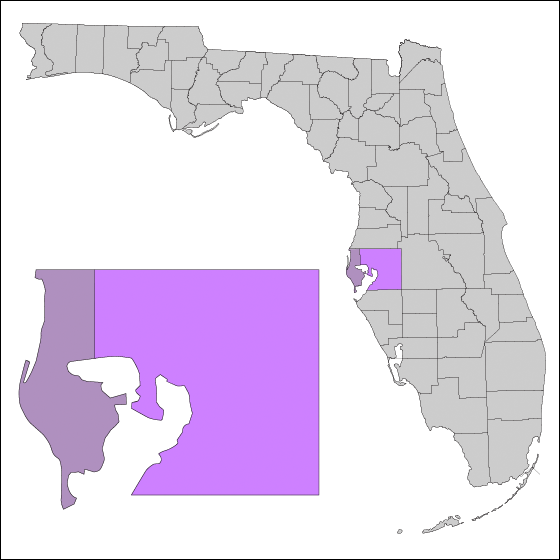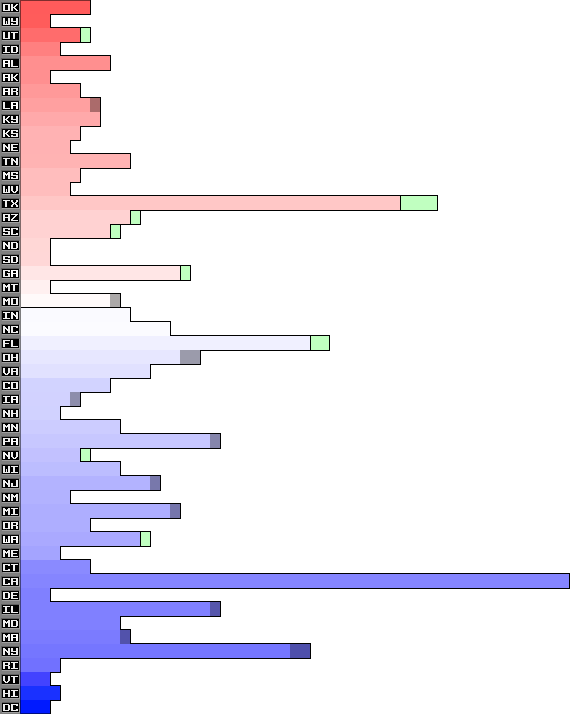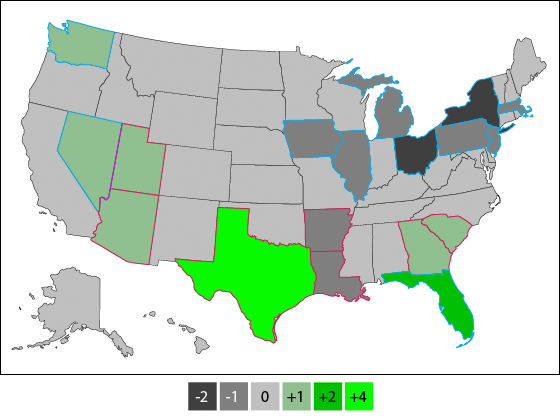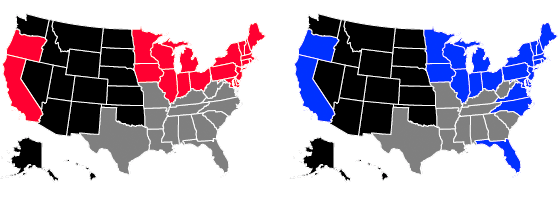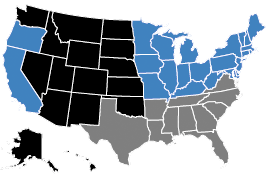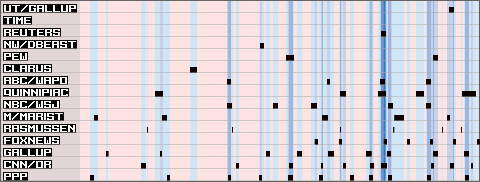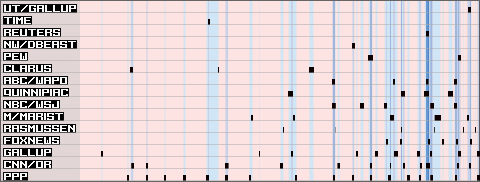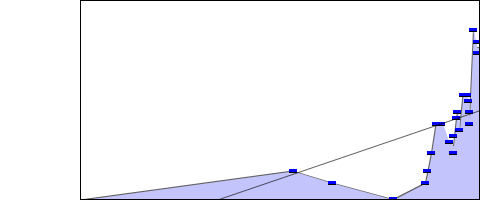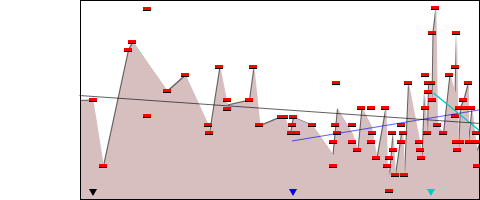Above, from left: Pinellas county, Hillsborough county; state of Florida county map.
A few things to keep in mind going into the 2012 cycle:
• For the past four cycles (the modern electoral era) Florida has gone with the winner.
• Since 1960, Hillsborough county has always gone with the winner.
• Within the past four cycles, it has gone to both parties twice.
• For the past four cycles, the margin of victory has never been >400k votes; total votes for Hillsborough county + Pinellas county in 2008 were just under 1 million.
• These two counties went to Obama in 2008; if he can hold them, all counties that did not go either exclusively D or R during the past four cycles could go R and he would still win the state in 2012, assuming all counties that have consistently gone either D or R continue to do so.
• The margin of victory in Hillsborough county tends to be relatively slim. In the hypothetical scenario where the county swings heavily toward Obama, he could take the state by winning all safe D counties and Hillsborough alone.

